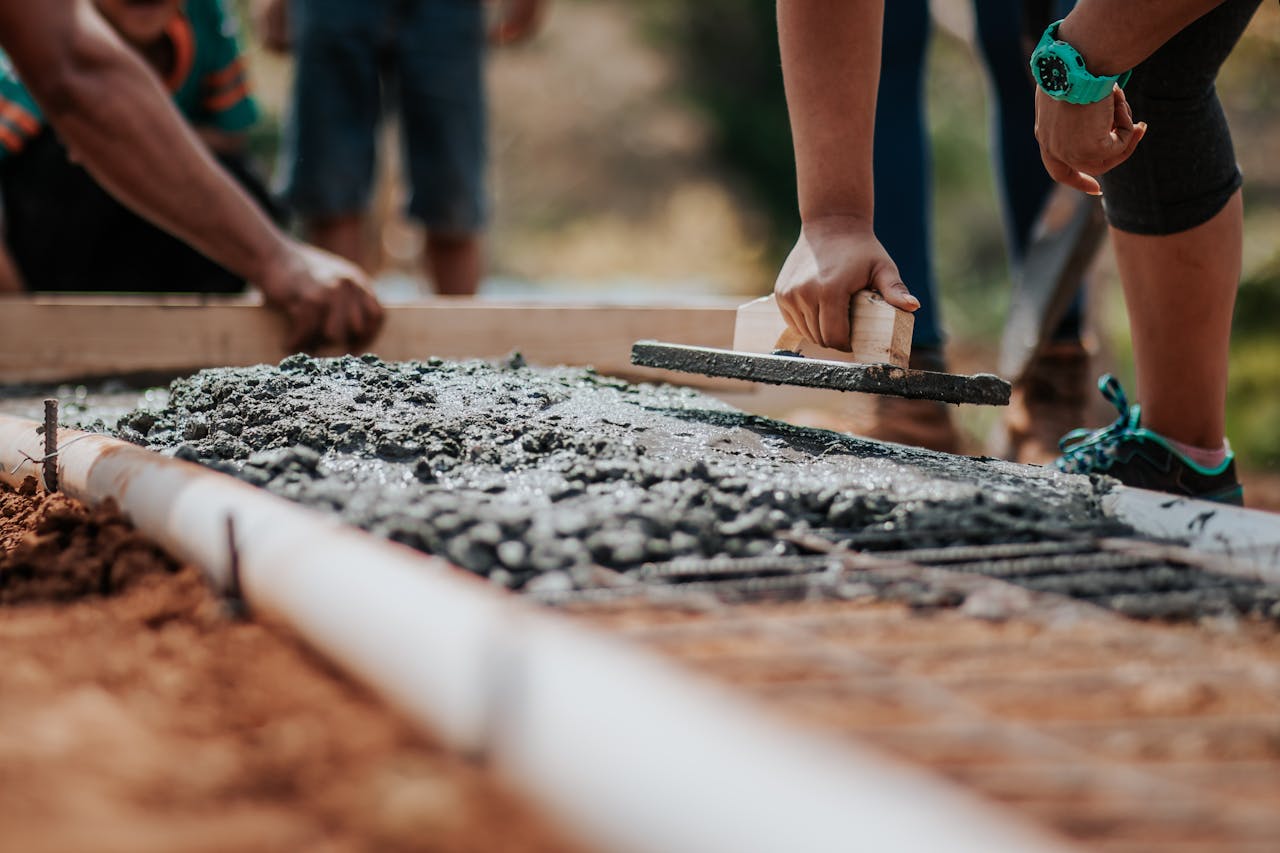From real-time monitoring to predictive analysis and automated systems, construction companies can guarantee superior concrete performance rich in strength and durability. Continue reading →
Concrete curing temperature affects the strength and durability of concrete structures. Proper management of curing conditions can avoid cracking, premature failure, and other issues that come with it.
Historically, maintaining an optimal curing environment has posed challenges for construction professionals, specifically in extreme weather conditions. Read on to learn more about technological applications and emphasize the significance of precise temperature management for high-quality concrete results.


Curing refers to the maintenance of adequate moisture, temperature, and time to allow the concrete to achieve its desired strength and durability. During the curing process, hydration represents the chemical reaction between water and cement, forming calcium silicate hydrate.
Curing is fundamentally two-fold: it must retain moisture for effective hydration and prevent rapid temperature fluctuations that may compromise the setting process. To learn more about concrete curing, industry leaders and experts like Deslauriers can give you in-depth knowledge. Without proper curing, concrete may suffer reduced compressive strength and increased susceptibility to cracking.
Smart technology has introduced a range of innovative solutions that simplify the temperature monitoring of concrete during curing. Temperature sensors designed for construction can now be placed throughout a concrete matrix to provide real-time data about curing conditions. These sensors communicate wirelessly with centralized monitoring systems, enabling instant alerts in cases of unfavorable temperature changes.
Integration with smartphones and tablets allows construction teams to keep track of data from remote locations. Some sensors can even monitor environmental conditions like humidity and ambient temperature. The data collected can optimize the curing process, informing decisions about water usage and curing accelerator applications.
There are several techniques that can be employed to manage the heat generated during hydration adequately. The use of insulating blankets or curing covers can retain heat in cold weather so that the curing temperature remains above critical thresholds. In warmer conditions, curing compounds can retain moisture and reflect harmful heat from the sun, preserving optimal hydration levels in the concrete.
Advanced methods also include the use of chilled water or ice in the mixing process to curb premature hydration reactions. These temperature control techniques maintain good thermal properties during the curing phase and contribute to the strength development of concrete over time. Proper implementation of these methods can achieve high-performance concrete that meets structural requirements and longevity expectations.
In terms of ambient conditions, professionals should account for temperature, wind, and humidity levels. High ambient temperatures can accelerate the curing process, resulting in rapid evaporation of moisture and increasing the risk of cracking. On the flip side, low temperatures can slow down the hydration process and prevent concrete from reaching its intended strength. Wind can exacerbate these conditions, as it promotes moisture loss and further complicates temperature control efforts.
Modern technologies may be the solution to these problems. The integration of IoT (Internet of Things) devices equips construction teams with the necessary tools to swiftly adapt to fluctuating weather patterns. By closely monitoring both ambient and internal concrete temperatures, professionals can make informed decisions regarding curing methods, timing, and materials to achieve optimal outcomes.
By leveraging historical data and current environmental conditions, professionals can forecast how concrete will behave during and after the curing process. This level of foresight enables teams to make strategic decisions that optimize curing conditions. Technology can analyze temperature trends to predict the ideal times for curing method adjustments and provide insights into potential pitfalls before they occur.
Such predictive capabilities can lead to better resource allocation, improved project planning, and superior structural integrity. Embracing predictive analytics allows construction teams to minimize risks and take an informed approach to optimal curing conditions.
The integration of automated systems in concrete curing has transformed how projects are managed by offering streamlined solutions that improve efficiency and control. Automated curing systems can maintain specific temperatures by adjusting heaters or cooling units as required according to real-time data. These systems utilize algorithms that automatically respond to environmental fluctuations so that the concrete receives consistent care throughout the curing process.
Automation minimizes human error and allows for continuous monitoring, reducing the labor needed for these tasks. With smart systems, teams can manage large-scale projects with ease and minimize delays.
Despite the numerous benefits of technology in monitoring and controlling concrete curing temperatures, some challenges still exist. Integrating advanced technologies requires skilled personnel who understand how to operate and maintain the systems effectively. Budget constraints can hinder the adoption of these innovative solutions for smaller construction companies.
Concerns regarding the reliability and accuracy of monitoring devices can also pose setbacks when dealing with extreme weather conditions. All team members should be adequately trained on these technologies, as the success of temperature control practices hinges on professionalism and expertise at all levels of the construction process.
From real-time monitoring to predictive analysis and automated systems, emerging technologies dramatically improve the capacity to manage curing temperatures effectively. By investing in these tools and the trained professionals to operate them, construction companies can guarantee superior concrete performance rich in strength and durability. Rapid advancements in this field signal a promising future for high-quality construction, and the industry can benefit from the adoption of these innovations.
While other cities like San Francisco, Austin, Seattle, and New York have made impressive strides…
Find out the major factors that influence pricing for both Magento Open Source and Magento…
For projects requiring comprehensive visual implementation across diverse contexts, Icons8 provides significant value despite these…
Discover how My Mini Factory is transforming automotive design with 3D printing. From custom parts…
Kansas City entrepreneurs partnering with ThrottleNet gain more than just technical support—they receive a strategic…
California is making strides in solar panel recycling, a vital part of its wider environmental…